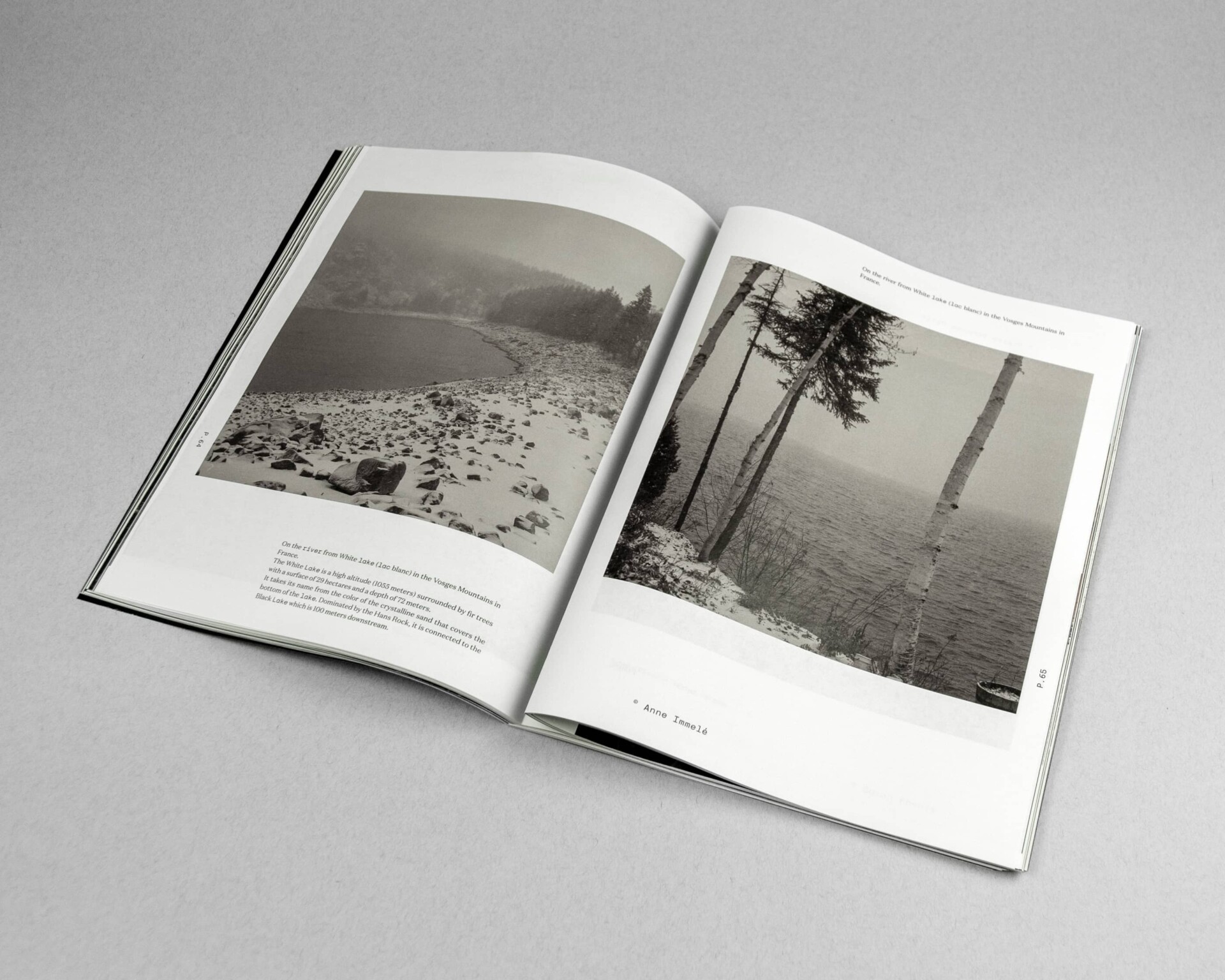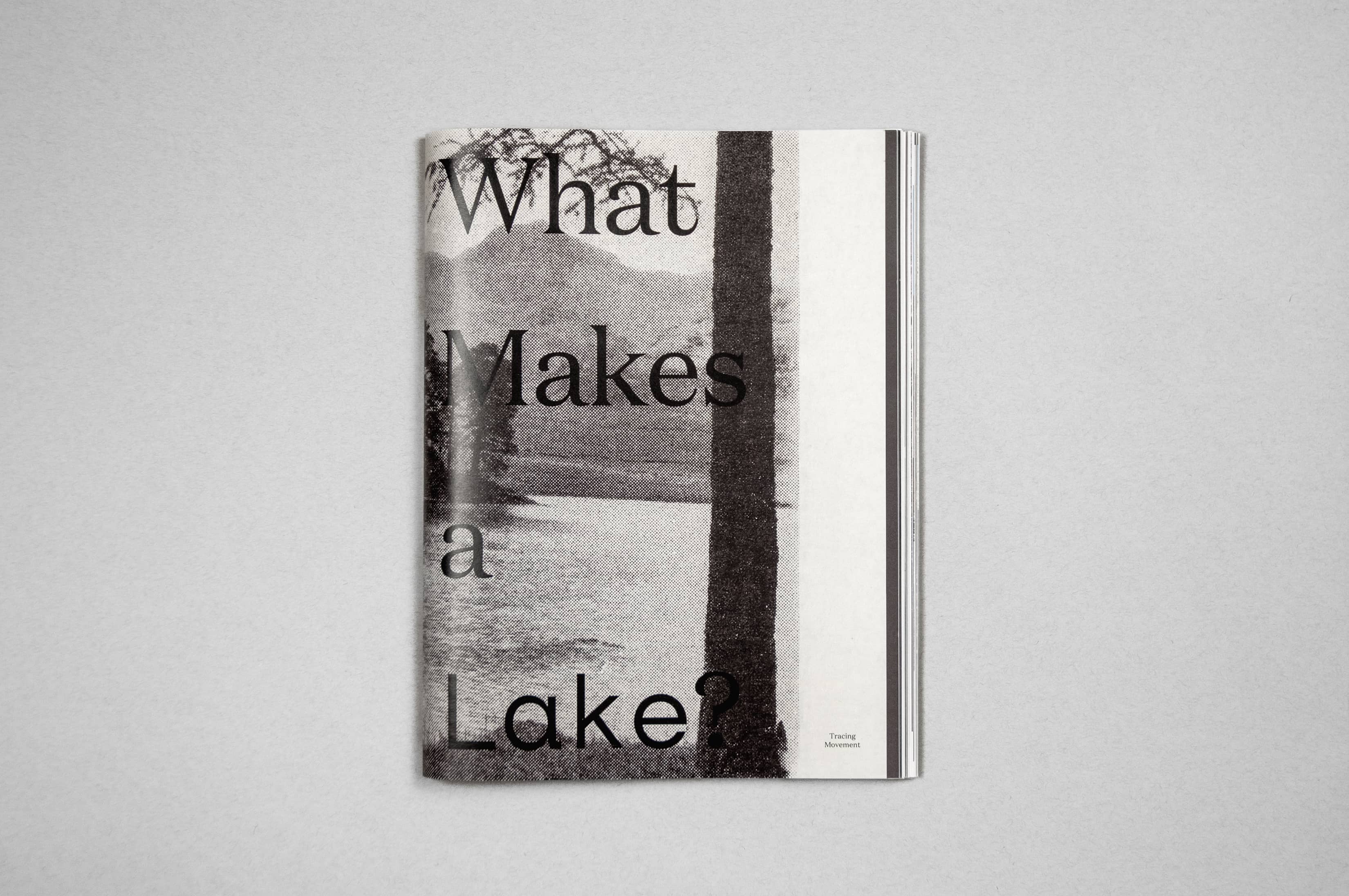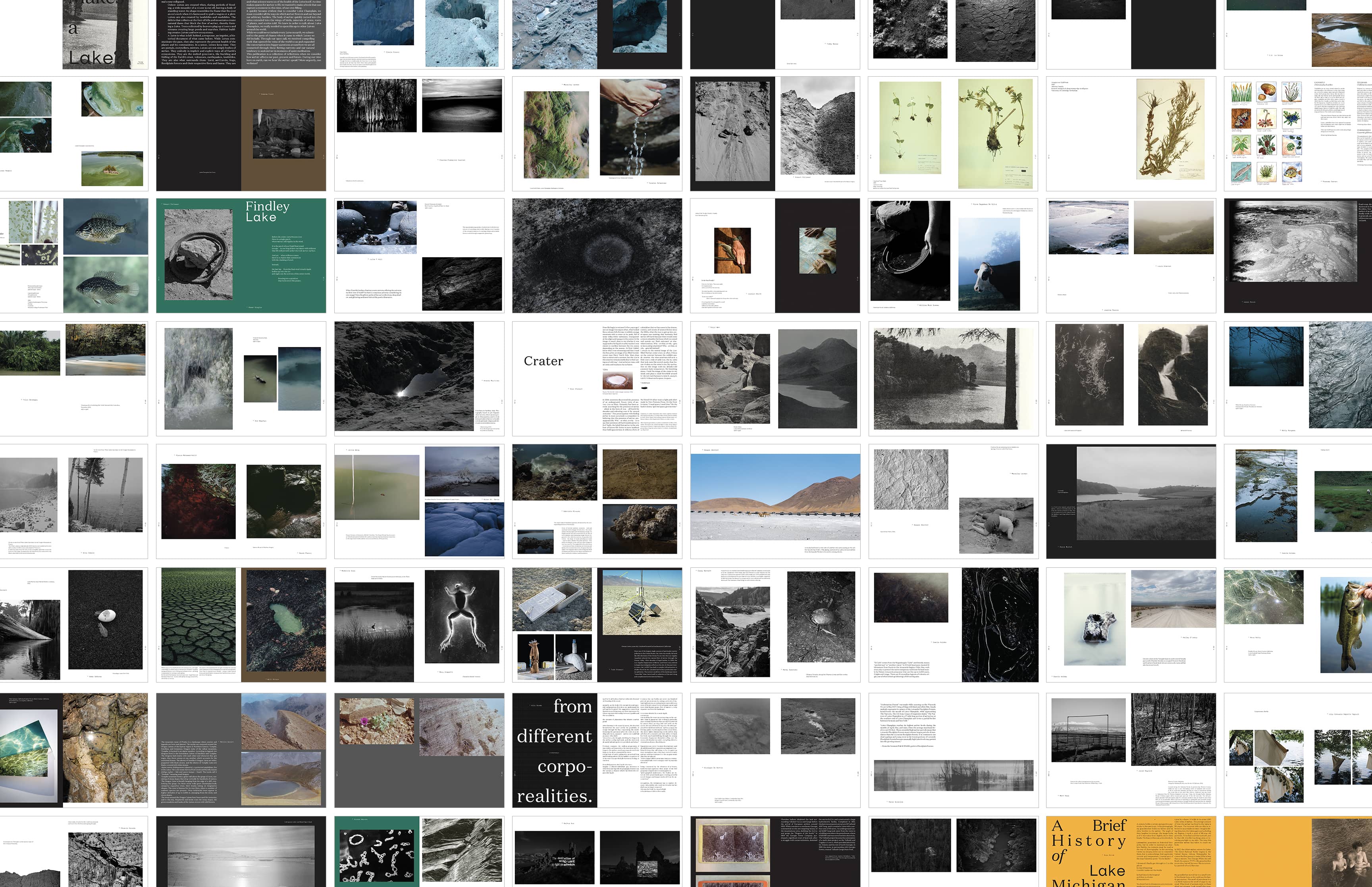ANOTHER EARTH: WHAT MAKES A LAKE? TRACING MOVEMENT

















 What Makes a Lake? brings together the work of more than 80 artists to create a portrait of Earth’s lakes, rivers, and oceans. This collection of images and text offers an intimate experience of places that we hope create a new connection and commitment to caring for our most vulnerable ecossytems.
What Makes a Lake? brings together the work of more than 80 artists to create a portrait of Earth’s lakes, rivers, and oceans. This collection of images and text offers an intimate experience of places that we hope create a new connection and commitment to caring for our most vulnerable ecossytems. This project and book is supported in part by the Burlington City Arts Community Fund Grant.
Concept, curation, editing: Abbey Meaker and Estefania Puerta
Sequencing: Abbey Meaker and Cristian Ordóñez
Design: Cristian OrdóñezPrinter: The Gas Company (Toronto, Canda)
Publisher: Another Earth
The Earth communicates in the presence and absence of lakes.
A lake is a large body of water surrounded by land. Lakes are formed by preceding natural events–glaciers, earth faults, the movement of tectonic plates. The craters of dormant volcanoes may fill with rain or melted snow, creating a lake. Sometimes the top of a volcano can collapse during an eruption, leaving a caldera which may also fill with rainwater and become a lake. Oregon’s Crater Lake was formed when the ancient volcano Mount Mazama’s cone collapsed.
Oxbow lakes are created when, during periods of flooding, a wide meander of a river is cut off, leaving a body of standing water. Its shape resembles the frame that fits over an ox’s neck when it’s harnessed to pull a wagon or a plow. Lakes are also created by landslides and mudslides. The debris that collects at the foot of hills and mountains create natural dams that block the flow of water, thereby forming a lake. Trees collected by beavers plug up rivers and streams creating large ponds and marshes. Habitat building creates lakes and new ecosystems.
A lake is what is left behind, a response, an imprint, a historical document of what came before. While lakes communicate the past, they also represent the present health of the planet and its communities. In a sense, lakes keep time. They are portals, storytellers, mirrors. Lakes are not simply bodies of water. They embody in implicit and explicit ways all of Earth’s ecosystems. They are the melted glaciers, the buckling and folding of the Earth’s crust, volcanoes, earthquakes, landslides. They are also what surrounds them: land, wetlands, bogs, floodplain forests and their respective flora and fauna. They are carnivorous plants and fungi, rocks that line their shores. We are the lake: our gaze, our histories, and memories. - Abbey Meaker
What Makes a Lake? Tracing Movement began as a project about Lake Champlain–the lake that two of the publishers currently live near. We wanted to collect documentation around the lake’s health, history, stories, and imagery, to find a bridge between what we feel when we visit this grandiose body of water and what science warns us of the health of the lake itself. As time makes spaces for water to fill, we wanted to make a book that can capture a moment in this time, of our own filling.
It quickly became evident that to consider Lake Champlain, we must consider all the ways in which water flows in and out beyond our arbitrary borders. The body of water quickly turned into the veins extended into the wings of birds, minerals of stone, roots of plants, and stories told. We knew in order to talk about Lake Champlain, we really needed to open this up to other lakes around the world.
While we could never include every lake on earth, we submitted to the game of chance when it came to which lakes we did include. Through our open call, we received compelling work that opened the veins of the world to us and expanded the conversation into bigger questions around how we are all connected through these flowing currents and our natural tendency to seek water in moments of quiet meditation.
This publication is a collection of reflections when we consider how water affects our past, present and future. During our time here on earth, can we hear the water speak? More urgently, can we listen? - Estefania Puerta